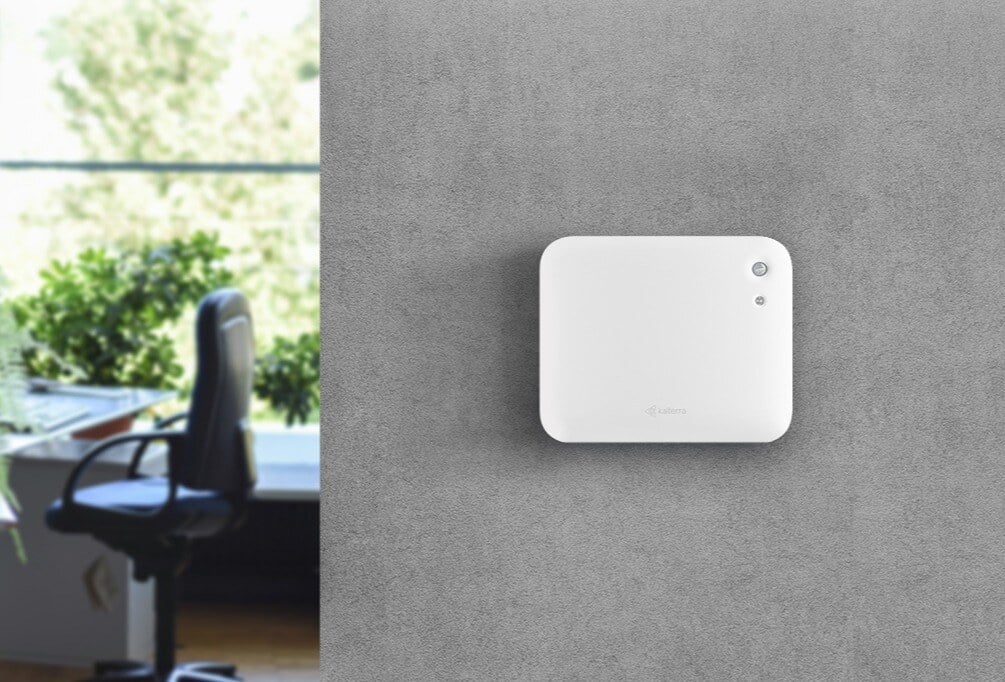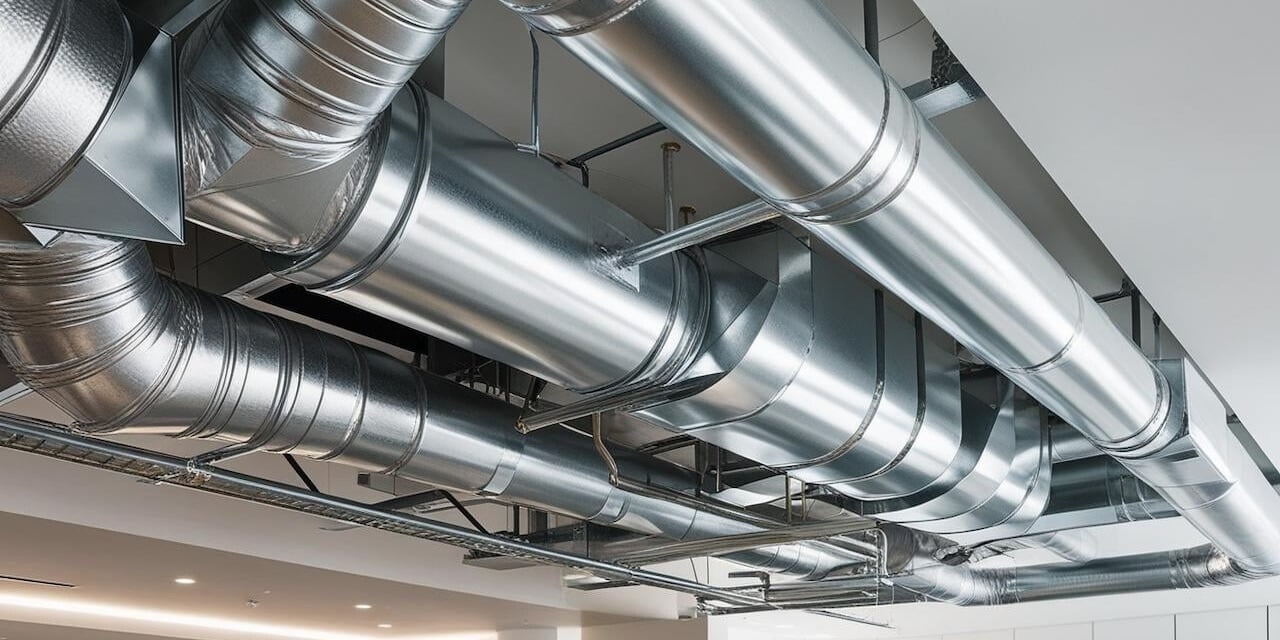Newsletter
At Kaiterra, we talk a lot about different types of air quality monitors and how to choose the best one for your project. Today, we’re diving into a question that almost every project will face early on: should I use a wired or wireless air quality monitor?
While there are a few articles online discussing wired and wireless sensors in general, the case can be different when it comes to air quality monitors. Typically, when people talk about “wired vs. wireless,” they’re referring to how the device connects to the network. However, in the world of air quality monitors, this distinction often extends beyond connectivity to include how the device is powered — because, as you might expect, power often involves wiring, too.
In this article, we’ll take a wider view and break down how to choose between a wired and wireless monitor, through the lenses of both power and connectivity. Before we get into the benefits of each, let’s start with how these two types of monitors are different.
What Is the Difference Between Wired and Wireless Air Quality Monitors?
We find that "wired vs. wireless" terms get used very loosely in the industry, and many devices will be wired for power but use wireless network protocols. To simplify the comparison, “wired monitors” below means they are wired for power and connectivity, and “wireless monitors” refer to monitors that are battery-powered and use wireless comms protocols.
A wired monitor uses a power source that is physically connected to your building. These monitors have to be hardwired, either by running electrical cables behind walls or over an Ethernet cable if using power over Ethernet (PoE). Ethernet also serves as the primary route of network connectivity for wired air quality monitors. If you’re thinking about setting up an indoor air quality (IAQ) project with wired monitors, know that the installation process will likely involve opening up drywall to run new cables.
A wireless air quality monitor, on the other hand, doesn’t have to be hardwired for power. Instead of connecting to cables, these monitors are powered by batteries. In terms of connectivity, these monitors can use a variety of wireless communication protocols, including Wi-Fi, Bluetooth, LoRaWAN, or Zigbee. While installing a wireless air quality monitor may not require running new cables, it’s important to note that certain factors can make a battery-powered solution unsuitable for your project.
When it comes down to the question of which monitor is better, the answer is neither! Both types of monitors have their pros and cons — the best option ultimately depends on which monitor can accommodate your space while also meeting the needs of your team. If you’re currently evaluating your options and trying to figure out which monitor is right for your project, here’s what you need to know.
The Advantages of Wired Air Quality Monitors
-
They have a stable power supply and connection
With a wired connection, your monitor will always have a dependable power source. As long as the building has power, the network will be on, and your monitor will be collecting and transmitting real-time data. With a stable power supply, you won’t have to worry about replacing batteries in every monitor throughout your building or portfolio.
Stable connectivity also bypasses common challenges with air quality monitors that use a wireless connection, like Wi-Fi or Bluetooth. You won’t have to troubleshoot connectivity disruptions or risk data gaps if the data transmission encounters any interference. As long as the monitor is plugged into the Ethernet cable, there’s nothing else you have to do to keep it running.
-
They require little to no maintenance
Once installed, wired monitors require almost no maintenance or regular upkeep (like replacing batteries - which can be a big pain), other than regular calibrations that are required for all air quality monitors. This can be a game-changer if you’re looking to start a large-scale deployment — your team won’t have to constantly replace batteries or potentially miss out on data if the batteries die before they’re replaced.
-
They have a low environmental impact
Since wired monitors don’t require batteries, they generate less waste over time, making them a more eco-friendly option than battery-powered air quality monitors that require batteries to be replaced on a regular basis.
-
They are preferred for integration with BMS
Consistent power ensures continuous data collection, and stable connectivity guarantees that air quality data is always transferred to the BMS. This is especially important for BMS integration, particularly when real-time automation and controls are required.
That being said, choosing a monitor for its stability typically means you’ll have to compromise on flexibility. The installation process often requires running new cables (unless it’s a new build), which not only drives up the upfront costs but can also limit your placement options, as each monitor has to be physically connected to the rest of the network.
This means you may not be able to install a monitor exactly where you want to in each room, and, after installing and connecting the monitor, you will likely be unable to move it if you want to start monitoring in another location in the room or building.
The Advantages of Wireless Air Quality Monitors
-
They have lower installation costs
A wireless air quality monitor is powered by batteries, not cables, which significantly lowers the costs of installation. Instead of running new cables throughout your space to connect to each device, all you have to do is put in fresh batteries and your monitor is ready to go. This shortens the installation process from days or weeks down to hours or even minutes!
Choosing battery-powered monitors can be a much more cost-effective and time-saving option for existing spaces or retrofits where you would otherwise have to knock down drywall to run cables for a wired monitor, as well as smaller-scale IAQ projects that may not have the budget or need for a hardwired installation.
-
They're easy to relocate
Since wireless monitors aren’t restricted to locations with a physical cable connection, they can be moved around as often as you need — just remove it from the wall and reattach it in the new location.
Your IAQ monitoring needs may shift over time, whether you identify a better location to monitor or if you find that certain factors (like placement too close to a window or changes in occupancy patterns) are impacting your air quality readings. In short, wireless monitors give you the freedom to adapt your monitoring strategy, no matter how the needs of your project change over time.
-
They provide network flexibility
While wired monitors only have one connectivity option (Ethernet), wireless air quality monitors have many (Wi-Fi, LoRaWAN, Bluetooth, Zigbee, cellular, etc). If you choose connectivity over Bluetooth or cellular, you’ll also have the option to keep your suite of sensors completely separate from the network your building uses.
For example, your building may offer Wi-Fi and Ethernet, but if you opt for a cellular connection, you can communicate data to the cloud without ever using your building network. Your devices can exist on a separate network layer, which bypasses existing IT complexities (like whitelisting every device’s IP address) that may delay your installation.
-
You can easily scale your deployment
Similar to ease of relocation, a wireless monitor deployment also has the advantage of easily scaling up or down as your project or building needs change. Because these monitors are battery-powered and don’t need a wired connection to a power source, they can be installed almost anywhere in your building. Scaling up is as simple as attaching a new monitor to the wall, instead of spending a lot of time and money to run new cables and reconfigure existing infrastructure.
Keep in mind that the level of flexibility offered by wireless monitors comes with a few trade-offs.
One main drawback of a wireless, battery-powered option is the added maintenance work required for battery replacement. This can be a major time drain if your monitor has a short battery life, which is common due to the high amount of power required to monitor certain parameters like particulate matter (PM).
That’s why we designed the Sensedge Go, our new wireless air quality monitor, to have the longest battery life on the market (up to eight years) using our patented Adaptive Sampling™ technology.
Besides, these monitors are also more vulnerable to data transmission interference from other devices (like in crowded areas where many people are using wireless devices) or structural obstacles (like thick concrete or metal) that can block wireless signals.
How to Choose the Right Air Quality Monitor
The right air quality monitor will depend largely on the needs of your project, the layout of your spaces, your budget, your integration preferences, and how much flexibility you require. While it’s best to work out each of these details with your IAQ vendor, here are a few guidelines to consider:
| Wired monitors are ideal for... | Wireless monitors are ideal for... |
|
|
At Kaiterra, we know there’s a place for both types of monitors. That’s why we offer both wired and wireless options — to meet your specific needs with a monitor that delivers the quality and specificity of data that you’re looking for.
Of course, power and connectivity aren’t the only factors to consider when choosing an air quality monitor for your project. We also recommend looking at whether a monitor:
- Can meet the requirements of building certifications like LEED, WELL, Fitwel, and RESET
- Measures enough parameters (CO2, PM2.5, TVOC, etc) to give you a comprehensive picture of your air quality
- Can be easily calibrated, as often as once per year to meet certain building certification requirements
- Pairs with a comprehensive dashboard that leverages real-time data analytics to show you exactly where and how to improve air quality
- Easily integrates into building automation networks through BACnet, API, and other communication protocols
No matter the needs of your project or space, our team can help you find the right solution and plan your IAQ strategy to get the most out of your monitoring investment. To learn more about choosing the right monitor, or to get recommendations for your project, reach out today to connect with one of our experts!






.png?width=200&height=148&name=Menu%20C%20(2).png)

.png?width=307&height=228&name=Menu%20-%20D%20(1).png)
.png)





